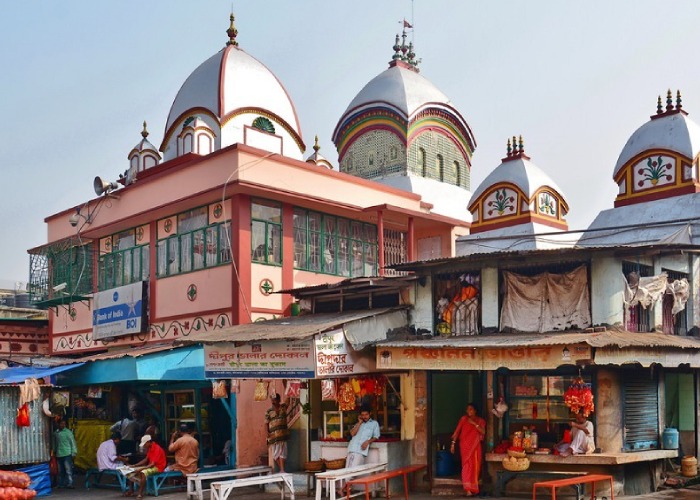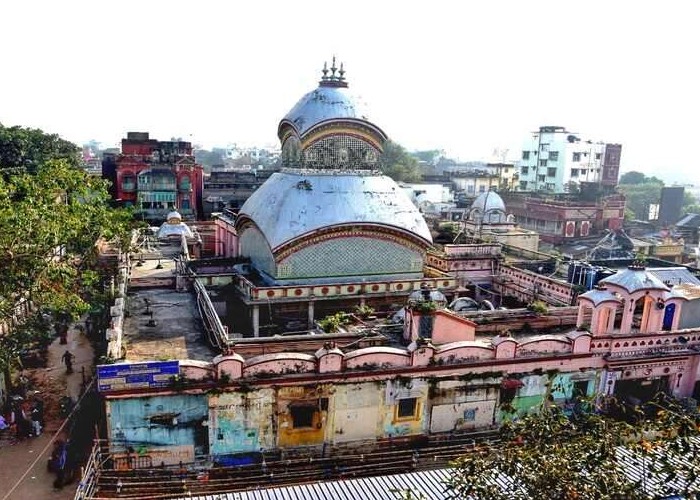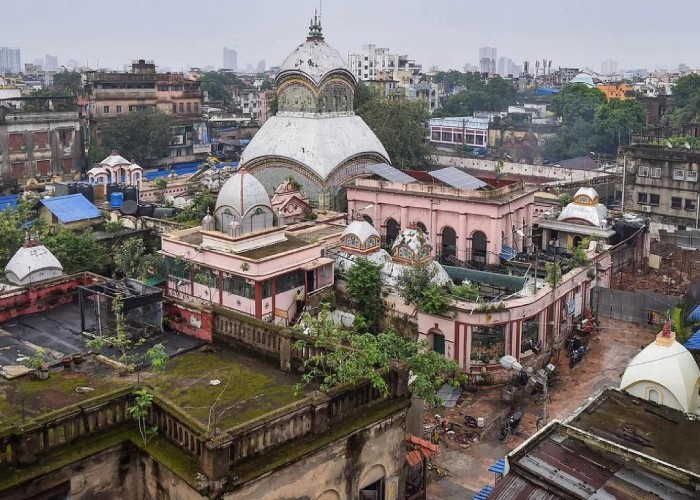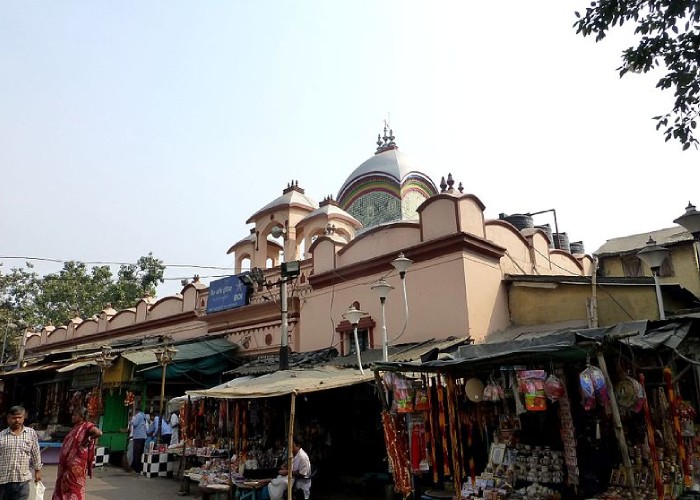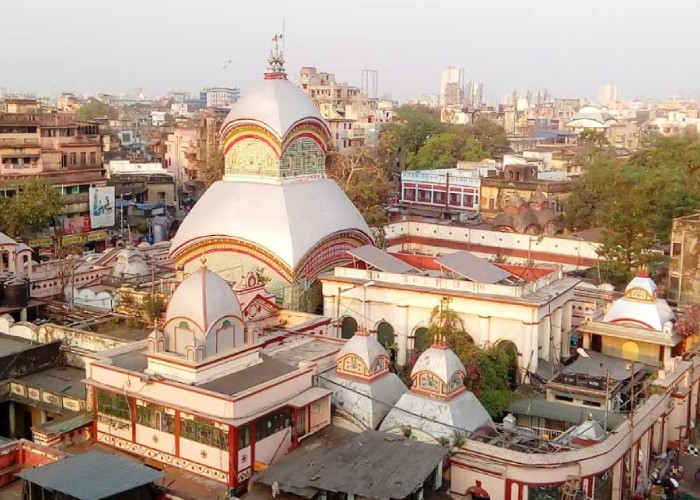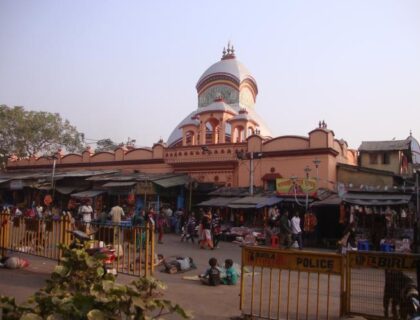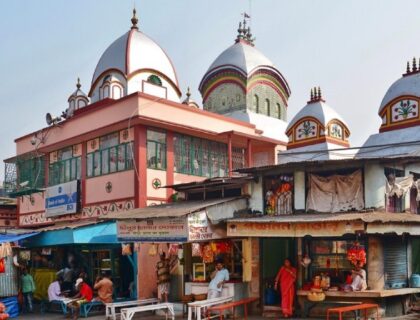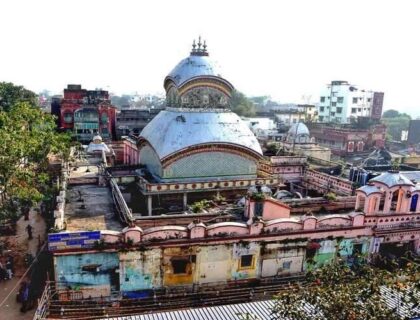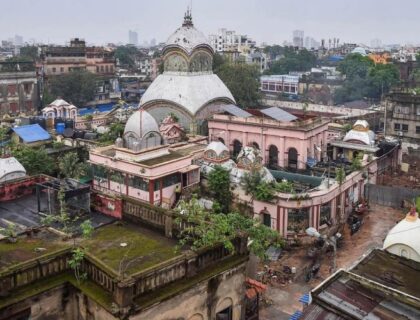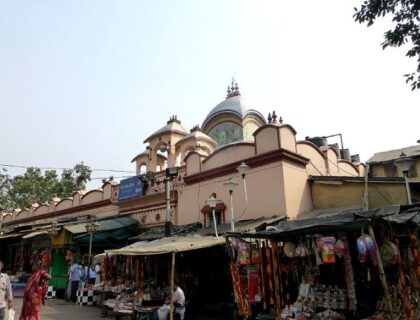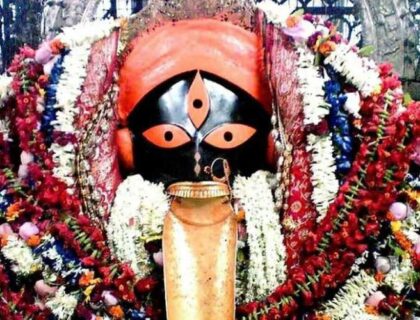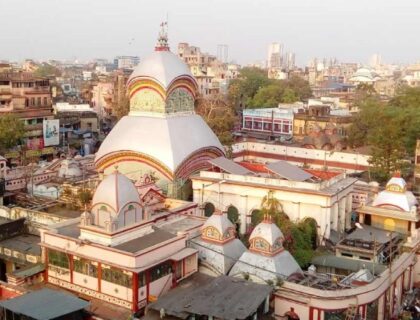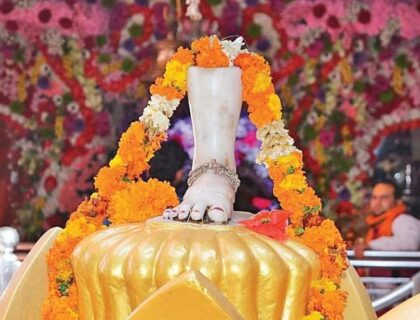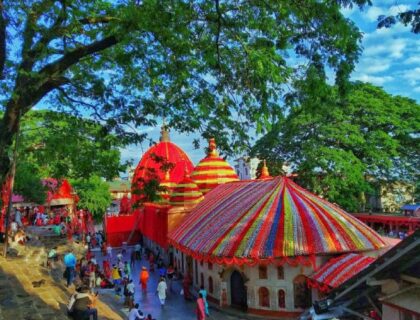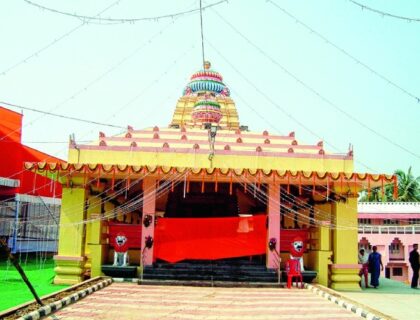Kalighat Kali Adi Shaktipeeth Temple
The Kalighat Kali Adi Shaktipeeth Temple is a well-known Kali temple also called as Kalighat Mandir located in Kalighat, Kolkata state of India. Kalighat is derived from the Hindu goddess Kali, who is housed in the Temple, and the Ghat refers to the riverbank on which the Temple is located. According to some sources, the name “Kolkata” is derived from the name of the Devi of Kalighat Temple, “Kalikata.”
Kalighat Kali Adi Shaktipeeth is one of the Indian Subcontinent’s 51 Shakti Peethas, where various parts of Sati’s body are said to have fallen during Shiva’s Rudra Tandava.
The story behind Kalighat Kali Adi Shaktipeeth
The goddess of Dakshayani, Sati, Parvati, or Durga—Hinduism’s most important woman and most powerful deity—is referred to as Shakti. Durga Devi, Mahakali, and Gowri are the three main manifestations of Shakti, the power goddess. She is Adi Shakti’s avatar.
Sati was the Prajapati Daksha’s daughter, and she married Lord Shiva despite Her father’s wishes. Prajapati Daksha once put together a massive yagya, but he didn’t call his daughter and son-in-law. Sati was very saddened by Her father’s actions. When she got there, her father ignored the Sati and insulted her. She could not bear insult to his husband (Lord Shiva) and she jumped into the fire of Yagya and committed suicide. She passed away, but her body didn’t burn. Lord Shiva had taken His Virabhadra Rupa out of rage. Daksha’s head was cut off by him, but in the end, He forgave him by bringing him back to life.
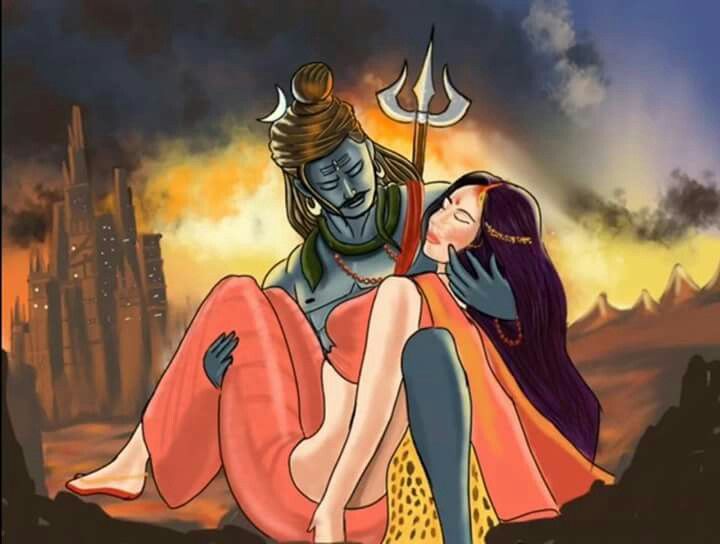
Lord Shiva, devastated, had taken Sati’s body and wandered the universe. Finally, Lord Vishnu used His Chakra to break the Sati’s body into pieces. Each body part transformed into Shakti Pitha. The temple had emerged where the body part had fallen to the ground. In order to safeguard the Shakti Pitha, Lord Shiva created 51 Bhairava for each one.
This sacred temple’s creation is related to Lord Shiva’s Rudra Tandav, who was enraged by Sati’s self-immolation following an argument with her father over not being invited to a puja ceremony at her father’s place.
The most well-known story about the Brahmin Atma Ram is Related to Kalighat Kali Temple. He discovered a stone structure resembling a human toe in the Bhagirathi River. He prayed to the stone that evening, and the next night he had a dream in which he discovered Sati’s toe had fallen into the river. In his dream, he was told to build a temple and look for a Swambhu Lingam of Nakuleshwar Bhairav, which he did later.
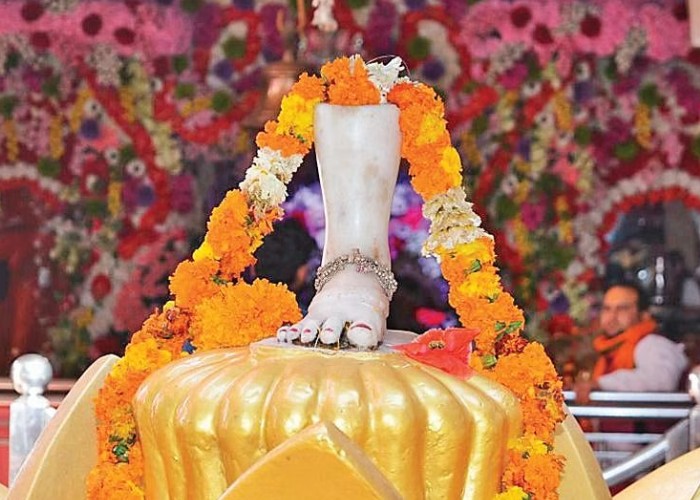
History of Kalighat Kali Adi Shaktipeeth
The inscription of the Kali temple of Kalighat can be found in both Kavi Kankan Mukunda Das’s “Chandi Mangal” from the 17th century and “Mansar Bhasan” from the 15th century, though the exact date of construction is unknown. Lalmohon Bidyanidhis, on the other hand, wrote it in “Sambanda Nirnay.”
It is said that the temple was an exemplary example of Bengal engineering, which is an underlying imitating of the mud and covered roofed cabins of towns, and was established as a small design by one devout holy person Chouranga Giri (a Dasanami Priest after whom Kolkata’s most well-known and elegant piece, Chowranghee region is named). In the early 16th century, King Mansingha, on the other hand, built a small structure for the original Temple.
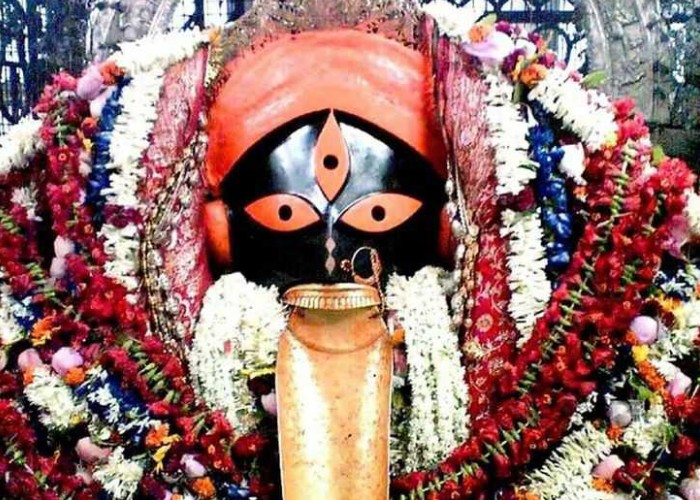
The Kalighat temple in its present form is only about 200 years old, although it has been referred to in Mansar Bhasan composed in the 15th century, and Kavi Kankan Chandi in the 17th century. The present structure of the temple was completed under the Sabarna Roy Chowdhury family’s patronage in 1809.
The architecture of Kalighat Kali Adi Shaktipeeth
The twin saints Atmaram and Brahmananda Giri carved the Goddess Kali idol out of sandstone, which has four hands, three large eyes, and a long tongue. The tongue and eyes of the idol are made of gold. The idol does not resemble the usual representations of Kali in any other location where she is worshipped.
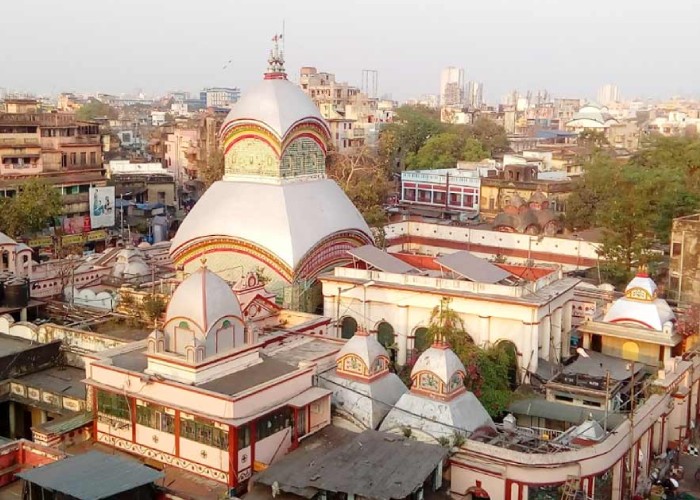
On the grounds of the Kalighat temple, there are several small temples, the most well-known of which is the Sosthi Tala. It’s a three-foot-tall, rectangular altar topped with a small cactus plant. Three stones placed beneath the tree represent the Goddesses Sosthi, Sitola, and Mongolian Chandi. Soshthi Tala or Monosha Tala are other names for this sacred site. Gobinda Das Mondal invented it in 1880. The special stepped area is located at Brahmananda Giri’s Samadhi. It’s strange that there aren’t any male priests here.
Facts about Kalighat Kali Adi Shaktipeeth
- Kalighat is acknowledged as one of the Adi Shakti Peetha across India, where the toes of the right foot of Sati fell during the Rudra Tandava of Lord Shiva.
- Kalighat Temple was built by the Sabarna Roy Chowdhury family of Barisha, about 200 years ago.
- A characterizing element of the Goddess Kali of Kalighat sanctuary is the long distending tongue, made of unadulterated gold.
- In close proximity to the Kalighat temple is the Nakuleswar Mahadeva temple, which is also quite old and well worth a visit.
- The Kalighat temple’s Hari-Kath tala is an important location. It is the exact spot where animals are sacrificed, and it is very important to religion.
- Chaitra Yatra/Chaitra Parba/Chaitra Mela is the most important festival celebrated here.
- Lakhs of devotees come from every corner of India to have the Darshan of Kalighat Kali.
- According to legends, the city of Calcutta was named after Kalighat.
Famous Festivals In Kalighat Kali Adi Shaktipeeth
- Durga Puja. (Winter) – Devotees celebrate Navaratri at this temple in the month of Ashwin (Sep-Oct).
- Navaratri. (Summer) – They celebrate other Navaratri in the fortnight of the Chaitra (March-April). Every nine days they worship Navadurga (nine Durgas).
- Diwali – Diwali is one of the most admired and auspicious festivals in the town.
- Mahashivratri– A grand fair is organized at the temple during the occasion of Maha Shivratri.
How to Reach Kalighat Kali Adi Shaktipeeth
The Kalighat stemple settles on the banks of the Adi Ganga Stream in the southern area of the city of Kolkata. In Kolkata, near Bhowanipur, it can be found in the area known as Kalighat.
By Air: The Netaji Subhash Chandra Bose International Airport which is 25 km from the temple.
By Rail: Howrah Junction is the nearest Railway Station which is about 10 Km from the temple.
By Road: Shyamaprasad Mukherjee Road is a short distance from the Temple. This road must be used by buses travelling toward south Kolkata. Explorers should get down the Kalighat transport pause and stroll down Kali Temple Street to arrive at the Kali Temple.
Metro Rail: The metro railway (underground and subway) connects Kalighat Kali Temple to all parts of the city. To get to this Temple, devotees or pilgrims can use the Kalighat metro station (south exit) or the Jatin Das Park metro station (north exit).
Also Read – Kamakhya Adi Shaktipeeth
Support Us
If our content helps you even 1% in gaining information about the temple, please support us by contributing any amount, our UPI ID is - q417999792@ybl Or pay using QR CODE >>> Click Now
Location
Facilities
- Drinking Water
- Pooja Item Shops
- Prasad Shops
- Restaurants Nearby
- Resting Room


